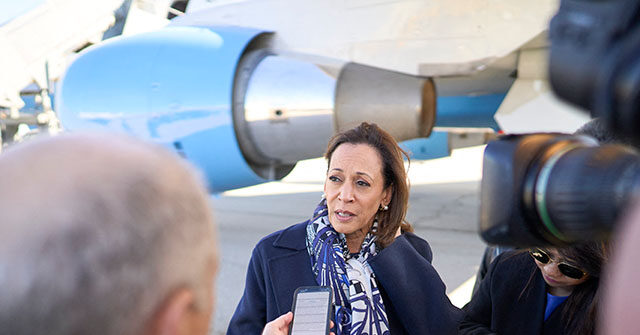Recently surfaced footage of Vice President Kamala Harris has prompted discussions about her energy levels on the campaign trail, particularly in light of the narrative her team has tried to promote which suggests that former President Donald Trump is the one who is low energy. The video, which was shared on the Trump War Room account on X (formerly Twitter), shows Harris appearing to be exhausted while resting her head on a headrest and yawning during a flight on Marine Two. This visual portrayal starkly contrasts with the campaign rhetoric that has characterized Trump as lacking vitality, thereby undermining Harris’s narrative as she seeks to present a strong front in the lead-up to the election.
The footage emerged after Harris delivered her closing remarks for a campaign event in Washington, D.C., held at the National Mall. As the election approaches, maintaining an energetic presence is vital for candidates, and such images can foster doubt among supporters and opponents alike. Critics of Harris, including those affiliated with Trump’s campaign, seized the opportunity to frame her displays of fatigue as indicative of deeper issues, suggesting that she may not be fit to continue campaigning effectively. The Trump War Room account pointedly remarked on Harris’s apparent exhaustion, insinuating that her struggles stem from the pressures and demands of her role alongside President Biden.
In the heated environment of political campaigning, optics can significantly impact perceptions of strength and capability. Harris’s situation serves as a reminder that candidates must constantly be on guard against how they are portrayed in the media and by their opponents. The mocking tone adopted by various commentators, particularly those aligned with Trump and conservative outlets, highlights a strategy often utilized in electoral politics: discrediting an opponent’s vitality or capacity to lead is an age-old tactic aimed at swaying undecided voters. By portraying Harris as “cracking under the rigors” of her campaign, critics aim to paint her as both unprepared and unqualified.
Harris’s campaign may now face additional scrutiny as they work to counter such negative narratives while sustaining momentum as the election draws nearer. Indeed, dealing with challenges like perceived fatigue among candidates is crucial when attempting to maintain public enthusiasm and draw in supporters. The emergence of this footage can be detrimental, especially if it remains widely circulated in an environment where visual impressions often hold substantial weight in voter sentiment.
Trump’s comments and related memes that have circulated online further amplify this phenomenon. The narrative built around Harris’s fatigue seems to be part of a larger tapestry of criticism aimed at framing her, and by extension the Biden administration, as ineffective. With Trump positioning himself as a robust candidate returning to the political arena, these contrasting images could significantly influence voter considerations and decisions as aspirations for re-election solidify.
In conclusion, the intersection of media portrayal, public perception, and campaign dynamics underscores the importance of sustaining an image of vigor and readiness in the competitive political landscape. For Harris, the challenge will be to reposition herself and her campaign narrative in light of this recent scrutiny. As Trump and his allies continue to capitalize on moments that depict Harris in an unflattering light, her ability to respond effectively and regain the narrative will be pivotal to her chances of success in the upcoming election. The stakes have never been higher as both parties strive to capture the attention and loyalty of the electorate in a time marked by heightened political tension.

